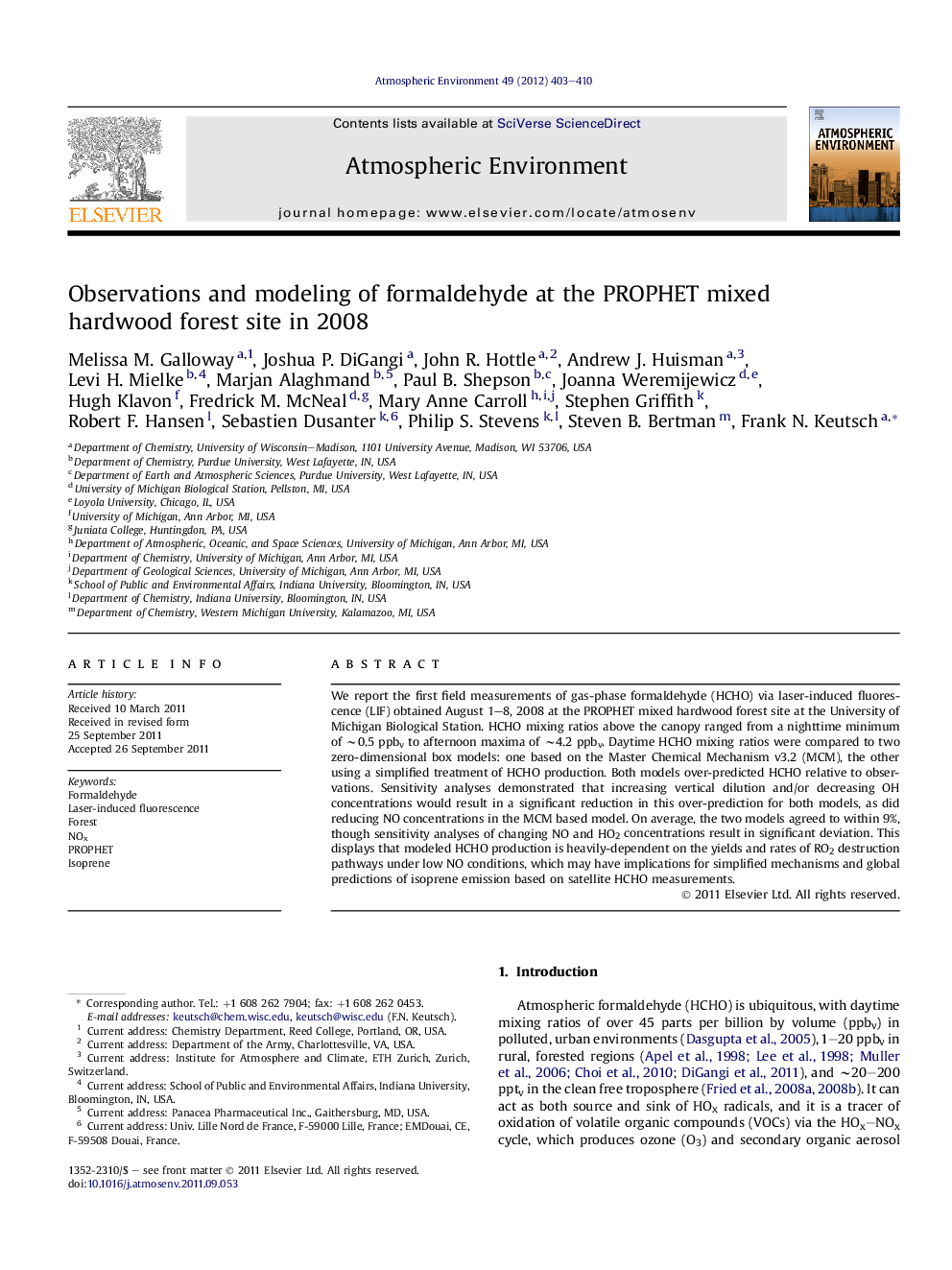| Article ID | Journal | Published Year | Pages | File Type |
|---|---|---|---|---|
| 4439099 | Atmospheric Environment | 2012 | 8 Pages |
We report the first field measurements of gas-phase formaldehyde (HCHO) via laser-induced fluorescence (LIF) obtained August 1–8, 2008 at the PROPHET mixed hardwood forest site at the University of Michigan Biological Station. HCHO mixing ratios above the canopy ranged from a nighttime minimum of ∼0.5 ppbv to afternoon maxima of ∼4.2 ppbv. Daytime HCHO mixing ratios were compared to two zero-dimensional box models: one based on the Master Chemical Mechanism v3.2 (MCM), the other using a simplified treatment of HCHO production. Both models over-predicted HCHO relative to observations. Sensitivity analyses demonstrated that increasing vertical dilution and/or decreasing OH concentrations would result in a significant reduction in this over-prediction for both models, as did reducing NO concentrations in the MCM based model. On average, the two models agreed to within 9%, though sensitivity analyses of changing NO and HO2 concentrations result in significant deviation. This displays that modeled HCHO production is heavily-dependent on the yields and rates of RO2 destruction pathways under low NO conditions, which may have implications for simplified mechanisms and global predictions of isoprene emission based on satellite HCHO measurements.
► First atmospheric field measurements of formaldehyde by LIF. ► Implicit and explicit chemical models of HCHO similar at rural, isoprene-rich site. ► Models sensitive to OH, vertical mixing and, to lesser degree, deposition velocity. ► Explicit model not in low NO regime, but reduction of NO results in lower HCHO. ► Implicit model HCHO high at “low” NO, with implications for modeling remote forests.
